Once upon a time, I used to have a bottle of Teriyaki Sauce that was two-thirds full. It lived in my refrigerator for at least two years. Somehow, the inspiration that caused me to buy it in the first place never visited my kitchen again, and eventually I threw it out.
Since visiting in Japan, teriyaki flavor comes to mind more frequently. Consultation with my expert in the field (that would be Ethan, who has a most discerning palate and a very clever wife) has led me to believe that I can make teriyaki sauce with better flavor, and a better relationship to its origins than ‘stuff in a bottle’. “Teriyaki” refers to traditionally marinated, grilled meat or fish. “Yaki” means cooked or grilled (or, as Ethan reminds me, burnt, actually) and according to Wiki, the “Teri” part refers to the glossy finish of the grilled marinated meat caused by the sugar and mirin in the glaze.
The essential ingredients in the sauce for teriyaki are soy sauce, mirin, sake and some kind of sugar (brown, white or honey). Garlic and ginger often appear in recipes, and I even found one that included onion, but only ginger seems to be universally required –garlic is not a very central player in Japanese cuisine. I think in Japan, teriyaki ingredients depend on what your mother used to do, or what your own palate dictates.
I don’t know about you, but I don’t keep sake on hand. While some recipes suggest dry sherry as a substitute, I don’t keep that on hand either. I always have mirin and rice wine vinegar in the cupboard – they never spoil, and they are both multi-taskers, useful in marinades, vinaigrettes and soups. Mirin is Japanese cooking wine, and stands in quite well for sake when combined with rice wine vinegar. You can’t beat the subtle flavor saki adds to the sauce, however, so if you can keep your kids from spontaneously sharing cross-cultural experiences, try to keep a small bottle hidden in the fridge.
Teriyaki sauce was originally reduced by simmering until the desired thickness and glazing ability was achieved. The practice of thickening the ingredients with cornstarch is a kitchen short-cut, good for stir-frying but not my personal choice – you have to make a slurry, which makes another dirty bowl and spoon, and then you run the risk of over-thickening, thinning, then thickening again ad nauseum to get the right texture. Also, cornstarch burns, whereas sugar carmelizes, so glazing with a sauce that doesn’t contain cornstarch sounds like a better idea to me.
While you can make a big batch of your own teriyaki sauce and keep it sealed and cold, I don’t want to have a leftover bottle in my refrigerator door ever again. I make just what I need, use it all up while the flavors are fresh, and enjoy both a clean conscience and a clean fridge.
Teriyaki Sauce
Ingredients:
- ¼ cup soy sauce (Japanese soy sauce is called shoyu, if you want to be a purist)
- 2 Tbsp mirin
- 2 Tbsp rice wine vinegar (or cider vinegar, in a pinch – just not white vinegar)
- (If you have sake, use it in place of the rice wine vinegar, NOT in place of the mirin)
- 1 Tbsp brown sugar (you could use honey if you’re out of brown sugar)
- 1 clove fresh garlic, peeled and roughly chopped (or 1/8 tsp garlic powder, or to taste)
- 2 slices fresh ginger, each about the size of a toonie, not peeled, roughly chopped (or ¼ tsp dried ginger, or to taste)


Method:
Pop everything in a small saucepan or small diameter frying pan. Bring to a boil over high heat, then lower the heat and simmer for 5 to 15 minutes (it goes faster in the frying pan, slower in the sauce pan) to reduce the volume by about half. Let it sit and cool for 5 minutes to extract the ginger and garlic
flavors. Allowing the sauce to reduce and infuse is essential to the best flavor, so start your sauce before you prep the rest of your dinner so it has time to reach perfection.
Strain to remove the garlic and ginger solids (unless you used powdered ginger and garlic, in which case, never mind).
Your result should be about ¼ cup of sauce, about as thick as maple syrup. It may be quite thin while still hot, but will thicken when cold. This is the perfect amount to glaze and finish two pieces of salmon, make a stir-fry for two, or season two or three burger patties, so plan accordingly.
If you’re not going to use it immediately, store it in an air-tight container in the fridge.




OPTIONS:
As always, this recipe is just a guideline – taste your sauce and adjust it to your liking. I like my food to be a little spicy, so I add a small squirt of sriracha sauce or some chili flakes to my teriyaki sauce (shockingly unconventional). I like a couple of drops of sesame oil too. You may prefer a sweeter sauce, in which case feel free to add a bit more sugar or honey. You can used reduced-sodium soy sauce. If you love garlic and/or ginger, by all means increase the amounts until you arrive at deliciousness. I believe fresh garlic and ginger provide the best flavor, but dried (or minced in a tube) will do if you don’t have fresh on hand. If you feel the sauce is missing a little something, I’ll bet it needs a touch of acid – try a squeeze of lemon or a little more rice wine vinegar.
By the way – if you choose your soy sauce with care (read the lable to eliminate those that contain wheat), your home-made teriyaki sauce will be gluten-free, vegetarian, and even vegan if you don’t use honey.
Teriyaki (Salmon, Chicken, Pork, Shrimp)
Choose a 4 to 6 ounce piece of protein per serving (chicken breast, pork chop, sandwich steak, salmon, shrimp on a skewer, probably even extra-firm tofu). Brush it liberally with teriyaki sauce. Cover and refrigerate for as little as 10 minutes and up to 24 hours.
Pat your protein dry before you cook it. It won’t brown nicely if it’s wet — it will only steam. You want that browning for the best flavor. You’re going to glaze your choice during the last bit of cooking for a lovely shiny finish.
Brush whatever you’re cooking lightly with an oil that’s good for high heat (canola, grapeseed, just not extra virgin olive oil, please).




Now you have choices.
You can barbeque. Preheat and oil your grill, and cook until done, glazing just at the end of the cooking process.
You can use a stove-top grill pan or large frying pan. Preheat it, oil it lightly, and sear your protein on both sides using medium high heat. Reduce the heat and glaze frequently while finishing the cooking process. I often lightly tent my my protein with foil while it finishes cooking to provide a slightly more moist environment.
You can roast in the toaster oven at 400°F. Brush with glaze during the last five minutes of roasting.
If you have a smoker, you can hot-smoke your choice. I don’t know how long it will take because everything is so variable, but if you use the guidelines below for internal temperature, you’ll get a delicious result. When I do a big batch of chicken, it takes a bit more than an hour. Salmon is faster.
How will you know when it’s done? If your piece of meat is thick (like a small beef tenderloin or a piece of pork tenderloin), use a meat thermometer – there’s really no other way to tell. I like medium rare beef (no more than 135°F internal temperature in the middle), and I like my pork to remain pink in the centre as well (140°F). Chicken should cook to an internal temperature of 160°F at its thickest point. A thick piece of salmon or other fish can be checked for doneness by poking it with a fork, giving a bit of a twist to see if it’s flaking nicely, and peeking to see if it’s done to your liking in the middle. I like to stop while the interior is still quite rare (125 – 130°F), but you may wish to cook until it’s opaque all the way through (145°F). Cook shrimp until just nicely pink — it will finish while you glaze it.
No matter what you cook, don’t forget to let it rest for at least 5 minutes (loosely tented with foil) before serving, so all the juices don’t run out onto the plate when you cut into it. Those juices need time to thicken every so slightly, and the muscle fibres need a chance to relax and hold onto them. “Carryover Cooking”, which happens during this rest time, will make sure that “rare” isn’t “raw”.
Give your Teriyaki a final brush with sauce, and serve with pride.
Teriyaki Burgers
On the advice of Cooks Illustrated, I have been adding just a little baking soda to my ground meat for burgers. It alters the pH of the surface of the meat particles, and keeps the burgers from becoming too compacted and tough. It’s an extra step, but so far, I think it’s worth it.
Hamburger is still sold most often in packages of about 1 pound or 500 grams, which makes 4 big burgers or any number of sliders. The ratio of baking soda to meat (whether it’s beef, pork, or a mixture) is 1/4 tsp to 1 pound or 500 grams. Break up your hamburger in a bowl and sprinkle it with baking soda just as if you were salting it. Toss lightly to make sure the baking soda is nicely distributed, and let it sit on the counter for about 15 minutes. Then go ahead and season with 1 Tbsp of Teriyaki sauce per serving (4 ounces, or 115 grams). You could add some finely chopped onion, green onion, or chives to the mix too, if you like.
Form burgers or sliders as you choose, and keep them refrigerated until you’re ready to cook them on a grill pan, in a frying pan, or on the barbeque. Brushing or spraying the patties with oil will help prevent sticking.
When they’re almost done, just before you take them off the heat, brush both sides with teriyaki sauce. Let them rest, tented with foil, for about 5 minutes before putting them into buns.
Garnish with coleslaw or lettuce, sriracha mayo, and maybe a little sliced green onion or a sprinkling of sesame seeds. Yum!






Other Teriyaki Sauce Applications
Teriyaki Stir-Fry. You don’t have to add pineapple, but lots of people think it’s a good idea. Marinate your chosen meat (chicken is the most common choice) in undiluted teriyaki sauce. Following usual stir-fry protocol, cook the meat first and remove it from the pan; stir-fry whatever veggies you’re using, add a little broth and steam (covered) for less than a minute; add the meat back and finish with more sauce. If you think the sauce is too runny, thicken it up with a slurry of cornstarch and water, or rice flour and water. Did I mention pineapple is optional?
Pork ribs love teriyaki sauce, as a marinade AND as a glaze. Fresh pineapple could be grilled and served as an accompaniment…
Oooooo, and wings! Don’t forget chicken wings! Marinate, roast and glaze. Make a double-batch of sauce, ’cause there’s no such thing as too much.



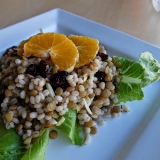
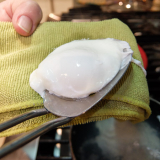
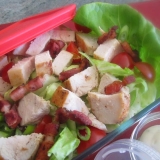

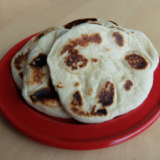

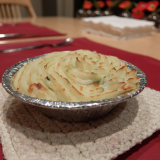
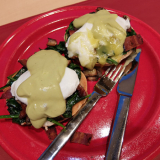

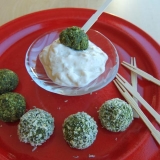

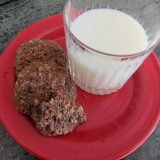
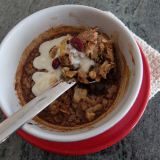
Leave A Comment